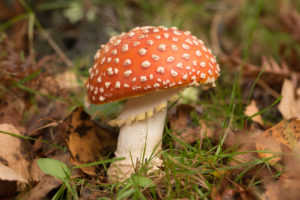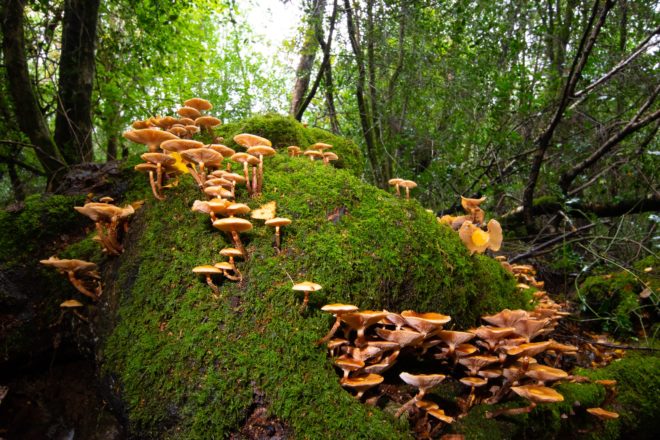Uncovering one of nature’s most important masterpieces: the humble mushroom
May 6, 2020
Daniel Greenwood, Volunteering Development Officer for the National Park, looks at a lesser-known gem of the South Downs…fungi!
The South Downs National Park is renowned for the 100-mile chalk ridge that passes from Eastbourne in East Sussex all the way to Winchester in Hampshire.
But the National Park reaches further north and south beyond the ridge. At the foot of the Downs woodlands of oak and beech can spread for miles. This wooded landscape is the Low Weald, a mixture of clay and sandy soils. Combining the Low and High Weald areas, the entirety of the Weald itself comprises the most wooded part of England.
 Deep in these woods something very special is happening. We all know the iconic mushroom, growing from the woodland floor in the autumn. But this is only the apple on the tree, because in the woodland soils a secret network of nature is fizzing with life. The fungal mycelium is a root-like system of what are known as ‘hyphae’, spreading through soils and connecting with the roots of trees and other plants. These mycelial networks are what produce the mushrooms that we see above ground and some of which make it to our dinner plates. In this way fungi are also crucial to the creation of soils through the recycling of organic matter like wood, leaves and animal remains.
Deep in these woods something very special is happening. We all know the iconic mushroom, growing from the woodland floor in the autumn. But this is only the apple on the tree, because in the woodland soils a secret network of nature is fizzing with life. The fungal mycelium is a root-like system of what are known as ‘hyphae’, spreading through soils and connecting with the roots of trees and other plants. These mycelial networks are what produce the mushrooms that we see above ground and some of which make it to our dinner plates. In this way fungi are also crucial to the creation of soils through the recycling of organic matter like wood, leaves and animal remains.
The interconnectedness of trees and fungi in woodlands is crucial to the survival of these lifeforms. The root hairs of trees connect with fungal hyphae and are even able to direct fungi to find resources in the soil that trees alone are unable to extract. This symbiotic relationship likely goes back billions of years on our planet.
Scientific experiments have also shown that trees that have fungal life support live longer and grow more vigorously, compared with those that don’t. We all know how important trees are for our own health and existence as a species on Earth, so let’s not forget the role of fungi in that!
If you get the chance to look across the wooded Weald from up high on the South Downs Way, consider not just the trees but the role of all the fungi in making this amazing National Park so green.

